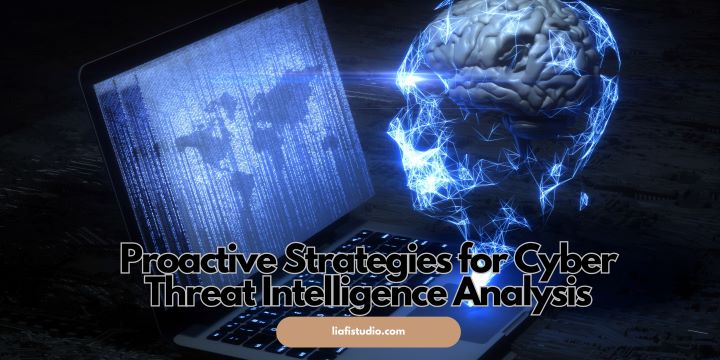Key Takeaways
- Understanding the fundamentals of cyber threat intelligence can enhance security measures.
- Proactive strategies are essential for identifying and mitigating potential threats.
- Integrating various intelligence sources yields more comprehensive threat identification.
- Staying informed with up-to-date research and news is crucial.
Table of Contents
- Introduction to Cyber Threat Intelligence
- Why Proactivity Is Key
- Strategic Approaches to Threat Analysis
- Integrating Intelligence Sources
- Staying Informed with Up-to-Date Research
- Conclusion
The area of cyber threat intelligence, or CTI, is concerned with obtaining, evaluating, and interpreting information regarding possible or ongoing assaults that can jeopardize the security of an organization. Maintaining a competitive edge over cybercriminals requires a robust threat intelligence platform in an increasingly interconnected world. These platforms facilitate the collection of pertinent data, threat analysis, and the implementation of preventative actions by companies. Businesses may gain a better awareness of the threat landscape and see patterns that might point to an upcoming assault by regularly collecting and evaluating threat data.
Furthermore, the integration of threat intelligence into everyday operations allows for real-time threat detection and response. This proactive stance ensures that organizations are not caught off-guard and can respond to threats swiftly and effectively. The continuous analysis of threat data also helps in refining and improving security measures over time, making the organization more resilient against evolving threats.
Why Proactivity Is Key
Being able to respond to threats before they become large-scale attacks is one of the most significant benefits of cyber threat intelligence. Experts in the area claim that taking a proactive stance not only saves money and time but also safeguards resources. By anticipating and eliminating hazards before they arise, organizations may drastically lower the amount of risk they are exposed to. Reactive methods, which sometimes include dealing with dangers after they have already caused harm, stand in stark contrast to this strategy. Businesses may detect vulnerabilities in their systems and fix them before they can be exploited by using proactive threat intelligence. This proactive measure improves the organization’s overall security posture while also reducing possible harm. Proactive actions might also discourage fraudsters by displaying to them that the company is watchful.
Strategic Approaches to Threat Analysis
- Automated threat detection tools
- Manual threat-hunting techniques
- Contextual threat analysis
Utilizing these approaches can significantly streamline the process of identifying potential cyber threats. Automated tools, like machine learning algorithms, offer the ability to detect patterns and anomalies in vast datasets quickly. These tools can process enormous amounts of data in real time, flagging suspicious activities for further analysis. Manual threat-hunting techniques, on the other hand, involve security experts meticulously searching through data to find hidden risks. This human element adds a layer of intuition and expertise that automated tools may lack, making it an essential part of the threat detection process.
Lastly, contextual threat analysis adds a layer of depth by incorporating situational awareness and understanding the potential impact of threats in a broader context. Contextual analysis involves examining the motives behind threats, the methods used, and the potential targets. This comprehensive view helps organizations prioritize threats based on their severity and potential impact, allowing for a more effective and efficient response.
Integrating Intelligence Sources
The combination of various sources of intelligence is crucial for practical cyber threat intelligence. Security teams can utilize internal logs and external threat data to develop a comprehensive understanding of potential risks. Organizations can gain a better understanding of the threat environment by merging both internal and external data, enabling them to develop more targeted and efficient mitigation plans. Data from within may consist of firewall logs, intrusion detection systems logs, and other security tools logs. On the flip side, external information can originate from threat intelligence feeds, security forums, and other sources that offer details on existing and new threats. Combining these varied data sources can improve the precision and dependability of threat intelligence. It allows organizations to connect various data points, recognize trends, and pinpoint abnormalities that could signal a possible risk. Additionally, collaborating with other entities and industry associations can enhance the information and enhance the ability to detect threats. This joint effort guarantees that threat intelligence is thorough and current, creating a solid basis for proactive threat management.
Staying Informed with Up-to-Date Research
Because the field of cybersecurity is constantly changing, it’s critical to keep up with the most recent findings and developments. Maintaining a close watch on current events and regularly checking reliable sources may assist in guaranteeing that your tactics stay applicable and valuable. Utilizing regularly updated data guarantees that your protection systems remain current and keep you one step ahead of the competition. To remain up to date on the newest trends and emerging threats, organizations may take part in webinars, attend industry conferences, and subscribe to threat intelligence feeds.
Furthermore, engaging in information-sharing programs and working with other groups might yield essential insights regarding fresh dangers and assault avenues. Security teams who remain up-to-date and knowledgeable are better able to modify their tactics in response to emerging threats and keep their defenses against cyberattacks robust.
Conclusion
In conclusion, understanding and utilizing cyber threat intelligence is critical for maintaining robust security measures. By adopting proactive strategies and integrating various intelligence sources, businesses can protect themselves from potential cyber threats. Continuous learning and staying informed with the latest research are essential steps in this journey. Be proactive, stay informed, and integrate intelligently to keep your organization safe. Implementing these strategies not only enhances your security posture but also fosters a culture of vigilance and preparedness within the organization.




